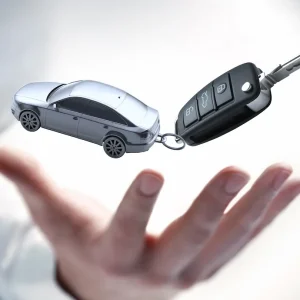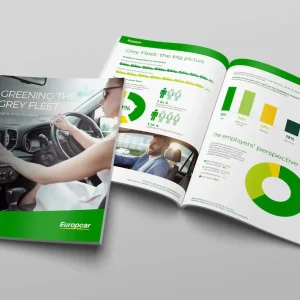The used car market has fallen out of love with EVs. They have always been more appealing to new buyers, who benefitted from the Plug-in Car Grant until June 2022, and it is unlikely that we need to remind readers of this publication about the tax perks for company car drivers and salary sacrifice takers, especially when fleets accounted for 66.7% of all battery-electric registrations and 74.7% of their volume gain in 2022.
None of the above has ever extended to second-hand buyers, and it was one of the reasons that residual value setters were initially so reticent about nascent plug-in cars. They held their hands up when EVs found their feet and favour with used car buyers, and plug-in models were right in the thick of the generally nutty values of the post-pandemic era.
Electric used cars are still more expensive than ICEs but neither prices nor desirability are where they once were. Cap HPI’s senior valuations editor, Chris Plumb, says the signs were there in quarter three of 2022, but the slide really took effect in the final months of the year.
In December, auction firm Aston Barclay said dealers were investing in used EV stock, because prices had fallen by “a few thousand pounds on some models”. In January, it reported that its average sale price for used EVs fell by -15.5% (£4,866) from £31,349 in quarter three to £26,483 in quarter four “as consumers moved their focus towards used petrol and hybrids”.
Figures from fellow auction firm Autorola were not dissimilar; it reported an 8.3% (£2,348) fall in average EV prices to £28,231 in quarter four. In mid-January, the National Association of Motor Auctions said EV prices had fallen by an average of 4% since the start of the year.
Cap HPI sent us the results of its February used car price movements by fuel type, which showed that both petrol and diesel cars were up by 0.4%, hybrids were down 1.6%, plug-in hybrids fell by 2.1%, and battery-electric cars had fallen by 6.6%.
The firm also gave us the lowdown of its top five biggest fallers at one-year-old and 10,000 miles in the three months to February, all of which were electric cars. They were the Tesla Model 3 (-24.2%), the Mini Cooper Electric (-23.6%), the Hyundai Ioniq Electric (-22.1%), the Nissan Leaf (-21.6%), and the BMW i3 (also -21.6%).
That ought to be enough in the way of statistics to prove that used EV prices have taken a bit of a battering. As for why, the common denominator cited by almost every auction company and residual value specialist is that they are just too expensive.
“In some cases, there’s between £10,000 and £12,000 difference for an equivalent used ICE vehicle and used electric,” says Plumb.
“Used EV prices were unlikely to stay at record highs forever, and it took the rising cost of living to contribute to a major market correction. An identical Honda HRV petrol and EV being sold in the same auction for £19,000 and £29,000 respectively shows the pressure the market has been under,” explained Mark Hankey, Aston Barclay’s chief revenue officer, “a £10,000 difference in the price of the same car with different fuel types has seen consumers move towards petrol and hybrids.”
Combine those sorts of outright purchase costs with the financial situation facing a lot of UK consumers, and you start to see why used car buyers – even those who may have previously have been considering an EV – might start to think twice.
It is a different kind of calculation, but Plumb says this rationalising also extends to the relatively short leap between the cost of a second-hand electric car and a new one.
“If you’ve got something with a used price of about £38,000 pounds at the moment, and you can get a similar competitor product starting at £40,000 new, and there’s availability of it, I think people will look again and say, ‘am I going to pay the price for that used one or am I going to pay the premium [for the new car]?'”
He adds that new vehicle supply, while still far from recovered, has improved for certain brands, which could sway buyers towards new vehicles if lead times are respectable.
Beyond the costs of the cars themselves, rocketing energy prices are working against EVs. The Office for National Statistics reported that UK electricity prices rose by 65.4% in 2022, and in January, the RAC said the cost of using public rapid and ultra-rapid chargers had risen by 50% since May.
Even with sky-high energy prices, it is widely acknowledged that drivers who can regularly charge at home will still save money on running costs (even more so if they draw power overnight and have a smart charger clever enough to exploit the very lowest rates) in comparison with a petrol or a diesel equivalent. Nonetheless, the aforementioned energy and charging figures do not exactly make the case for switching to an EV, especially for used buyers devoid of company car and salsac tax perks.
Volume is also an issue, as BCA’s Chief operating officer, Stuart Pearson, explains: “More used EVs are returning to the market than ever before, and. there is definitely some volatility in their pricing.”
It sounds strange when you consider how paltry an amount of the overall used car market is actually made up of EVs, but it is nonetheless growing. Cap HPI’s data says they accounted for 1.3% of all vehicles of all ages last year, up “just over half a percent” on 2021, according to Plumb, but they have a slightly bigger share of the newer market.
“When you switch that to vehicles up to three years old, the percentage share for electric at the end of 2022 was at just about 8.5%. That’s an increase from 2.1% in 2021, so there are just more vehicles coming into the market.”
As Aston Barclay suggested, dealers may have planned for a quick buck when they cashed in on what probably looked like a typical seasonal drop in values towards the end of last year. But as Plumb explains, there are now a lot of EVs languishing on forecourts with lofty sticker prices because, even though used car buyers’ appetites are not what they were, dealers will need to make their money back.
“Their demand to replenish stock has been very limited, because they’re finding that consumers aren’t coming in and buying them, so EVs are sitting on dealer forecourts for a longer period of time than probably an ICE or even a hybrid vehicle.
“What we aren’t seeing is massive discounting down from the advertised price, because those vehicles they bought three or four months ago are still on the forecourt. They paid a lot more money for them than they’re worth today, and they’re trying to mitigate against their losses.”
He thinks the market is in for more of the same in the short and the medium term – a gradual increase in the supply of both new and used electric vehicles, which will outweigh demand. Longer term, he reckons current trends could shape electric vehicles’ position in the used car market, and potentially reduce prices to a more palatable level, closer to those of petrol and diesel models.
“What we may see is an accelerated period of where vehicles start getting more affordable to more people in the used market. these vehicles will find a price, and once they do, they’ll become attractive for retailers to start stocking them in numbers again – and for consumers to come back into the market for them.
“I just don’t know when that will be at the moment, because there’s so much uncertainty in terms of the volumes coming into the market, how many are going to be registered new, and what is that affordability?”





